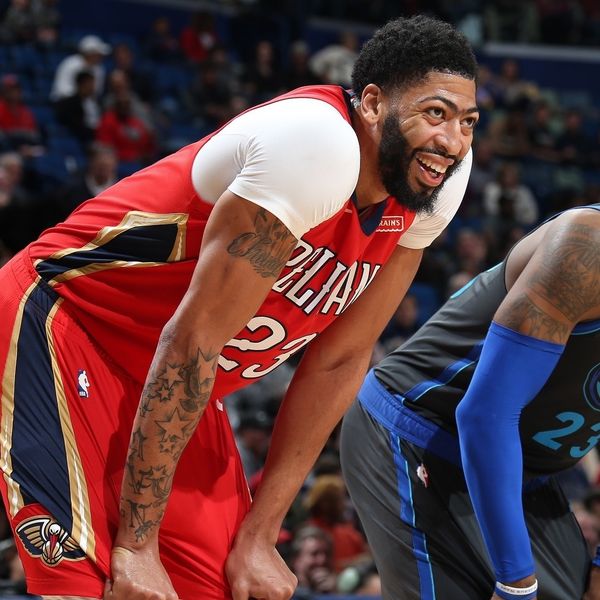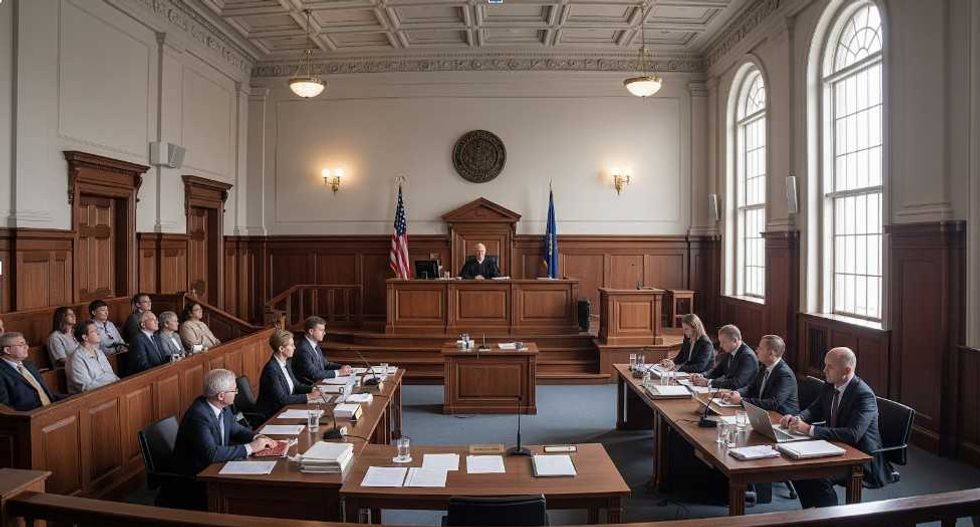The NBA postseason is a day-to-day battle of physical capabilities and cognitive strategizing. Rotations tighten, scouting increases, defenses ramp up the energy and the word “adjustments” becomes an everyday ritual of evaluating a coach’s denomination. Although the first round hasn’t offered the most competitive fray, there is plenty to take away in the form of breaking down each series.
Cleveland Cavaliers vs. Detroit Pistons
-Cleveland’s Kevin Love-at-the-5 lineups are devastating offensively with Love pick-and-pops with Kyrie Irving or LeBron armed coalesced in a web of floor spacers. Detroit doesn’t have a natural hiding place from Andre Drummond or Aaron Baynes as they can’t hedge full-fledged LeBron drive or Kyrie shake before recovering to Love at the 3-point line. Stan Van Gundy has tried to get by, by placing his big on Iman Shumpert, and, although Shumpert is a subpar perimeter shooter, he drives Detroit’s 5 just far enough away from the basket to protect the rim against LeBron or Irving.
The problem for Detroit is magnified because the natural drawback of playing Love at the 5 is at the other end, where Love is mercilessly targeted in pick-and-rolls while trying to combat the hulking Drummond on the glass. However, Cleveland deployed the hack-a-Drummond strategy to force Drummond off the floor, making Detroit’s pick-and-roll game much less intimating and onerous for Love with the insertion of Baynes. Van Gundy eventually experimented with doing away with a center all together and playing a frontcourt combination of Tobias Harris and Marcus Morris allowing Detroit to switch everything defensively, but it leaves one in danger of being eaten by Love post ups, which wounded the Pistons all series.
-The Pistons’ lack of secondary creators was an infectious sting in their efforts to keep up with the Cavs offensively. Outside of Reggie Jackson, Van Gundy doesn’t have the necessity of another guy who can catch and consistently make a play for himself or a teammate. Harris and Morris display snippets of such skills, but don’t possess the natural offensive savvy to do much more than attempt to blow by Love in face up situations.
-Morris and Harris attacking Love has brought about the daze that ails the Cavs fine-tuned machine. The Pistons don’t have the means to keep pace with the Cavs when Cleveland is rolling, and Morris and Harris can only inflict so much damage with their limited skillsets, but Love’s scars defensively are sliced open, and those scars could prove fatal in the latter rounds of postseason play when the talent advantage won’t drastically scale to Cleveland’s favor.
Miami Heat vs. Charlotte Hornets
-The Heat’s offense was operating at a record pace through the first two contests with the Miami pushing the pace and spacing the floor with four perimeter players surrounding Hassan Whiteside. The pace adjustment by Erik Spoelstra after acquiring Joe Johnson has to do with playing fast; it’s more about maximizing the team’s opportunity for good looks.
Aside from Whiteside and Amare Stoudemire, every other Miami rotational player has credence to handle the ball as teammates run the floor. While it’s is no guarantee the quickened pace will result in an open look or layup from the Heat, it forces Charlotte to prepare to combat the possibility of a score making communicating cross matches and identifying possible players to help off difficult. Essentially, by the time the Hornets settle down and organize their defense, Miami is already getting into a scoring action.
Spoelstra also inverted traditional floor spacing by having non-shooting wings such as Dwyane Wade and Justice Winslow play the role of baseline dunker, typically reserved for springy behemoths without a jumpshot. Not only has it forced Charlotte to be more diligent in accounting for Miami’s non-shooters taking away help opportunities, but the Heat has actually used it as a way to conduct offense.
-Whiteside is a terrorizer with his length and shot blocking, but when he gets sucked away from the hoop, his footwork and upright stance can leave him in a paralyzed state. Whiteside has struggled to contain the jitterbug quickness of Kemba Walker and Jeremy Lin off the bounce, allocating too much breathing room for the Hornets’ guards to slice through the defense as they jet past Whiteside, and not even Whiteside’s monstrous wingspan have been able to curtail the duos crafty finishes.
-In the first two games of the series, Charlotte was overwhelmed by Miami’s athleticism on the offensive end. Hornets coach Steve Clifford said the team wasn’t disciplined in both their technique and fundamental principles on the defensive end, but even when Hornets defenders did execute, the Heat consistently finished in the paint. Joe Johnson carved out enough space careening into the paint to flip up floaters, Wade displayed his casual mesmerizing body control to ward off challengers and Whiteside leaped over everyone to continuously stuff the ball through the hoop, but Clifford inserted Frank Kaminsky into the starting lineup in Game 3, a heavily-ridiculed move. Kaminsky predictably struggled closing on Luol Deng at the game’s outset, but in the second half, the adjustment started to take shape. Kaminsky gave Charlotte another big body to deter the ventures of Heat players into the paint, and, offensively, Kaminsky did away with spotting up for 3s and began taking Miami’s smaller wings inside. For a day at least, big ball won.
Los Angeles Clippers vs. Portland Trail Blazers
-Credit Doc Rivers, who typically isn’t revered in his occupation for his X’s and O’s, for devising a game plan to defuse of the Portland’s duo of Damian Lillard and C.J. McCollum. The Clips deviated from its normal strategy of having its big hang back on pick-and-rolls in favor of blitzing the hell out of them to force Portland’s guards to give up the ball, where Portland’s lackluster shooting and overall playmaking from its forward spots have handicapped their offense (Mason Plumlee finally started to make plays in Game 3, and it made a huge difference).
It’s easy to theorize this shift in the team’s game plan, but it requires Deandre Jordan to play outside of his comfort zone and be disciplined enough to recover to his initial assignment. Jordan has been spectacular so far, maintaining his stance to shut off Lillard from turning the corner while staying close enough to dissuade Lillard’s off-the-dribble 3-point jacks. Chris Paul merits applause as well as he’s been hounding Lillard and fighting over picks with his traditional intensity and handsy ball pressure.
-Portland head coach Terry Stotts, however, wasn’t content to let his star guards dwell in hebetude and remain bystanders as Al-Fariqu Aminu continued to clank 3s. Stotts counteracted the Clippers’ blitzing tendency by screening Jordan beforehand (screening the screener) to put him behind the play and crack open crevices for Lillard and McCollum to slither through. Stotts also had his guards doing more work off the ball, flying off stagger screens and into drives and cutting backdoor when the Clips overplayed on the perimeter.
-While Lillard has gotten his fair share of rest on the defensive end, covering whatever hapless talent is occupying the 3 position for the Clippers, McCollum has been afforded no such breaks as he’s been chasing JJ Redick all over the court, dodging screens as if he’s navigating an obstacle course. Redick has sprung free for good looks, and while those were long 2-pointers in Game 1, they escalated to more triples in Game 2, making the situation less tenable for Stotts’ crew.
It’s fair to ponder just how much fatigue this is inflicting on McCollum, but the Blazers don’t have anywhere else to ease the burden defensively.
Oklahoma City Thunder vs. Dallas Mavericks
-The Mavs simply don’t have the horses to legitimacy challenge OKC, but every clutch-time scenario (score within five points in the game’s last five minutes) is a practice test for the Thunder before they have to take the actual ACTs. The Thunder faced such a scenario in Game 2, and, well let's just say Billy Donovan and his squad have some more studying to do. The offense took up its usual languid and predictable form with high pick-and-rolls for Russell Westbrook and Kevin Durant with the occasional pindown screen for Durant tossed in. Donovan actually drew up some solid action, including Durant’s missed jumper on OKC’s second-to-last possession. Overall, however, OKC abided by its usual stagnation with dudes chilling in the corner while Durant and Westbrook maneuver through a thicket of help defenders.
There are subtle strategies OKC could deploy to divert the defense’s attention from the primary action. Any screening on the weakside, particularly a curl screen involving whichever of Durant or Westbrook isn’t handling the ball, would demand prioritization and temporarily occupy a help defender’s attention because one does not simply let Durant or Westbrook emerge off a screen unfettered. A basic exchange of positions on the weakside is another possible tactic. It was a staple of Villanova’s offense throughout the NCAA Tournament, and other NBA teams have experimented with it at times. Essentially, the players in the weakside corner and on the weakside wing toggle spots; it’s not strenuous to execute or necessarily defend, but it at least forces help defenders to account for their man when crashing into the lane to choke off penetration by OKC’s stars.
-Another major takeaway from Game 2 was the deplorable defense by Westbrook in the game’s final five minutes. Westbrook’s upright stance and general aloofness made Raymond Felton look like prime Derrick Rose as he bolted past Westbrook and compromised the OKC defense. OKC will get by against the Mavs with this detached style of defense, but San Antonio will shred it in the conference semifinals. Westbrook has to be more engaged and overcome any mental or physical fatigue as the competition escalates.
-The Mavs are fighting and clawing to remain competitive in this series and Dirk continues to fill our hearts with joy, both of which are commendable, but the Mavs are at a tremendous deficit in nearly every key facet: skill level, youth, athleticism, size, length. It’s only to possible to do so much with veterans who are falling apart. The Mavs could use more Justin Anderson-types, but Mark Cuban shucks aside the future every summer and Rick Carlisle has a low tolerance for tenderfoots playing important roles.
Toronto Raptors vs. Indiana Pacers
-DeMar DeRozan’s struggles against Paul George in this series has exposed his abilities as a go-to scorer when scouting and effort ramps up in the postseason. George is as of a wing-defender as there is in the league outside of Kawhi Leonard, but DeRozan’s game isn’t conducive to combating a defender of George’s caliber either. If he isn’t suckering opponents into falling for his pump fakes and getting to the line, he’s often uncoiling inefficient contested jumpers from the midrange. DeRozan’s poor perimeter shooting has long been identified as an invective component of his arsenal, but his lack of explosiveness on his drives is an overlooked problem. DeRozan drove more than any player in the league during the regular season and had success because of his crafty footwork and body positioning, but with a long and disciplined defender like George, he’s failed to exhibit same efficiency. Still, if DeRozan can draw additional attention from the defense, he can derive value without scoring.
-Frank Vogel’s Pacers will never be confused with an offensive juggernaut, but there’s a difference between being a below average offense and a saturnine crapshoot of offensive potency. Vogel’s club managed just a 102.4 offensive rating in the regular season, ranking 23rd in the league. In the playoffs its undergone a drop as scoring naturally decreases, but the Pacers’ 101.3 rating is still better than seven other playoff participants via nba.com. However, Vogel has continued to indulge in lineups where the entire trio of George, Monta Ellis and George Hill sits, leaving the Indiana offense a desiccate desert of offensive production. The Pacers have managed just an 94.9 offensive rating with such lineups, while conceding 107.7 points per 100 possessions according to nbawowy, a net difference that may not prove tenable if Indiana is to pull the first-round upset.
-Vogel inserted the shooting of Myles Turner into the starting lineup in Game 4 in favor of Lavoy Allen, who played just 2:30 minutes. The offensive upgrade showed its worth from the outset, with Turner’s shooting range making defending the pick-and-pop a near impossible task for Toronto’s starting frontcourt of Jonas Valanciunas and Luis Scola.
The battles among the game’s giants continues to be the crux of the series. Vogel gave his team the tactical advantage in Game 4, and if Dwayne Casey remains ardent in continuing to etch Scola’s name in the starting lineup over Patrick Patterson it could spell another first round exit and a long look at his supposedly sturdy stature as the team’s head coach.
Atlanta Hawks vs. Boston Celtics
-Paul Millsap was finally unleashed on the Celtics on Game 4 with Mike Budenholzer reluctantly subverting his offense in favor of Millsap’s face up isolation work. Millsap is too quick for Boston’s bigs such as Jonas Jerebko and Amir Johnson, while his power throws smaller wings like Jae Crowder off balance as he attempts a scoring move. Millsap was an extremely efficient in post-up situations this season per nba.com, including in prior meetings with Boston. Millsap rolled to 45 points in Game 4 after being struggling through the first three games of the series. However, down the stretch Brad Stevens stuck the feisty Marcus Smart on Millsap, somewhat neutralizing his game. As this series moves back to Atlanta tied at two games apiece, the Millsap subject will require careful balancing on the part of Budenholzer and Stevens.
-After Isaiah Thomas shot just 12-36 in the first two games of the series, Brad Stevens adjusted the plan of attack, giving his go-to scorer more opportunities to roam off the ball and catch either looking to shoot or with a head start on possible penetration. Stevens took Thomas out of the pick-and-roll where the Hawks big man combo of Paul Millsap and Al Horford have the capability to mirror Thomas’ shifty moves enough to deter shot attempts with their reach. The altered offensive strategy saw Thomas score 42 points in Game 3 and 28 in Game 4, shooting 12-24 and 11-23, respectively.
-Hawks guard Kent Bazemore flies around the court offensively, unleashing a series of cuts and maniacal drives to the bucket, drawing the attention of helping bigs. Those drives are chaotic at times, but it still punctures the defense opening up lanes for bouncy bigs to pound home putback dunks even if the shot doesn’t fall. However, this advantage is somewhat nullified in Atlanta, where for all of their versatility and overlooked splendidness, Paul Millsap and Al Horford aren’t athletic leapers. Slated to be a free agent this summer, it would be intriguing to see Bazemore land in a situation with a big man who could clean up his useful messes.
Golden State Warriors vs. Houston Rockets
-Steph Curry’s injuries are a major concern for Golden State going forward. His splayed out tumble after slipping on a wet spot and hurting his knee did not look good, and the Warriors star initially seemed lucky to get by without any serious ligament damage. It was a freak injury, seemingly disassociated with his previous ankle sprain or a season-long load of offensive wizardry. Although the severity of the injury has yet to be determined, this why hope is always kindle in the NBA. It’s why the Spurs didn’t overreact with their issues defending the Warriors. It’s why the Cavs reneged on a possible Kevin Love trade. Luck is part of the championship equation, and unlike most other factors, it’s undeterminable.
-The Rockets are a mess and Curry’s injuries are the only thing causing this club to remain intact for a few more days before they bolt their separate ways, some with the intention of never returning *cough* Dwight. The defensive lapses and overall communication manifested in the second half even when trading Curry’s magic for the limited range of Shaun Livingston. The Dwight Howard-James Harden rift appears real, and there is just a haggard presence hanging over this team.
-Marreese Speights has been an adored gunner; the rare reserve heat-check guy who comes in to play the 5 and launch jumpers, while his doughy physique leaves him susceptible on the defensive end. Speights’ struggles defensively aren’t being washed away; he provides no rim protection, his wingspan is unimpressive and he can’t move well enough in the pick-and-roll, but offensively Speights has begun to expand his range. Speights’ is more frequently beginning to roam beyond the arc and pop 3s as opposed to his inefficient midrange jumper. In four games this postseason, Speights is attempting 2.8 3-pointers per game at a 45.5 percent clip forcing defenses to stretch themselves thin and pumping up Golden State’s second unit.
San Antonio Spurs vs. Memphis Grizzlies
-Marc Gasol is hurt. Mike Conley is hurt. Mario Chalmers is hurt. Brandan Wright is hurt. The Grizz have no players. Sadly, this series is all about what future value can be derived from players like Jarrell Martin, Xavier Munford and P.J. Hairston.
-The Spurs are really good; check in next round to find out how good. There isn’t anything to take away from this series.





















